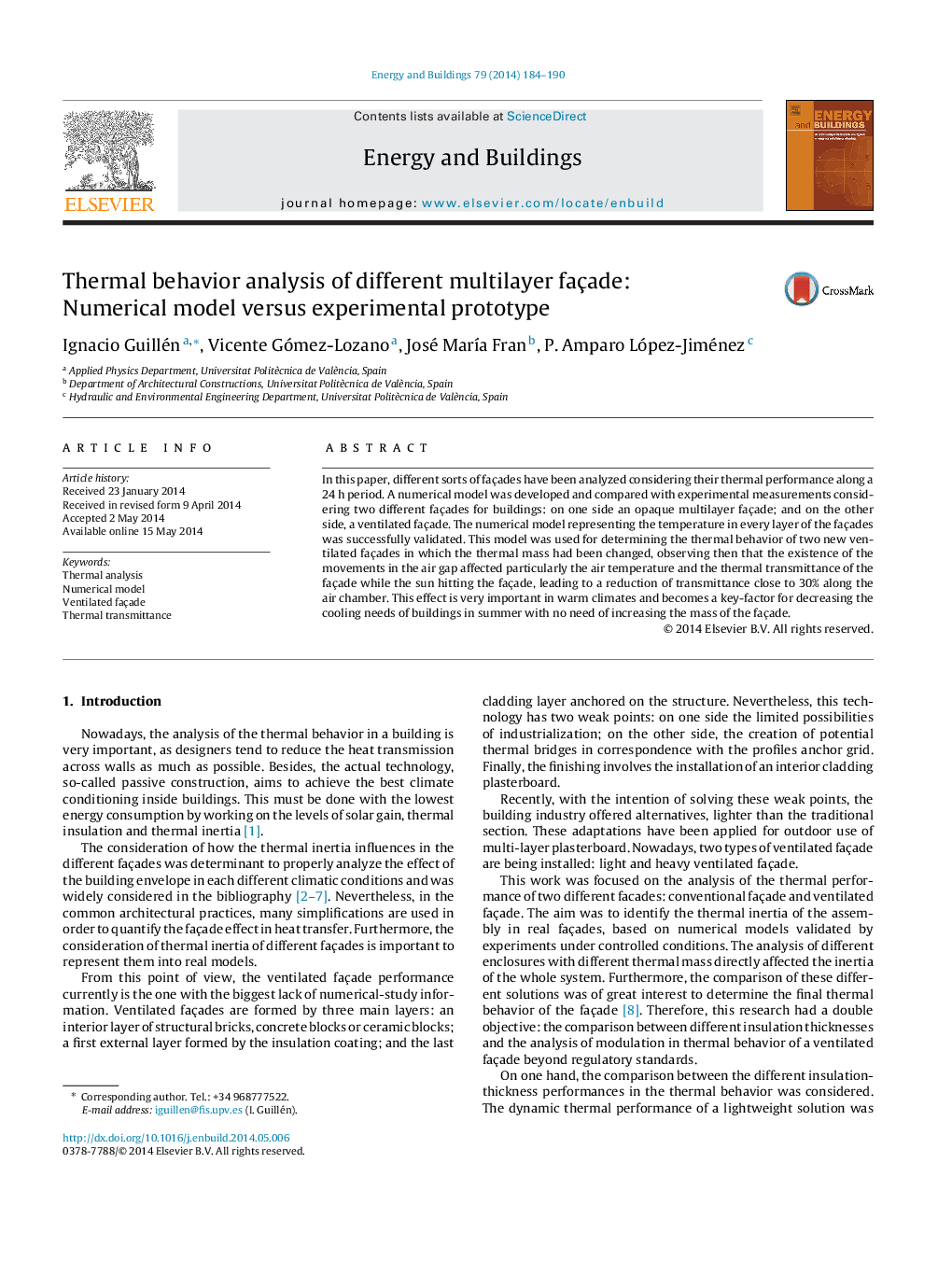| Article ID | Journal | Published Year | Pages | File Type |
|---|---|---|---|---|
| 262944 | Energy and Buildings | 2014 | 7 Pages |
•Different sort of façades have been analyzed considering their thermal behavior along a 24 h period.•A numerical model has been developed and compared with experimental measurements considering two different façades for buildings.•This model has been used for determining the thermal behavior of two new ventilated façades in which the thermal mass has been changed.
In this paper, different sorts of façades have been analyzed considering their thermal performance along a 24 h period. A numerical model was developed and compared with experimental measurements considering two different façades for buildings: on one side an opaque multilayer façade; and on the other side, a ventilated façade. The numerical model representing the temperature in every layer of the façades was successfully validated. This model was used for determining the thermal behavior of two new ventilated façades in which the thermal mass had been changed, observing then that the existence of the movements in the air gap affected particularly the air temperature and the thermal transmittance of the façade while the sun hitting the façade, leading to a reduction of transmittance close to 30% along the air chamber. This effect is very important in warm climates and becomes a key-factor for decreasing the cooling needs of buildings in summer with no need of increasing the mass of the façade.
